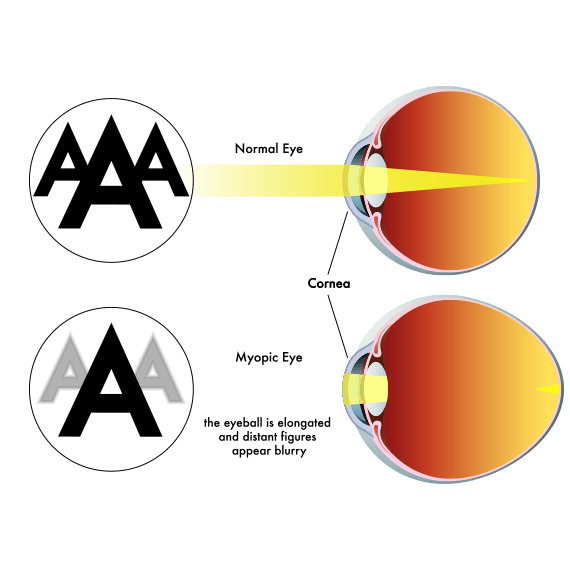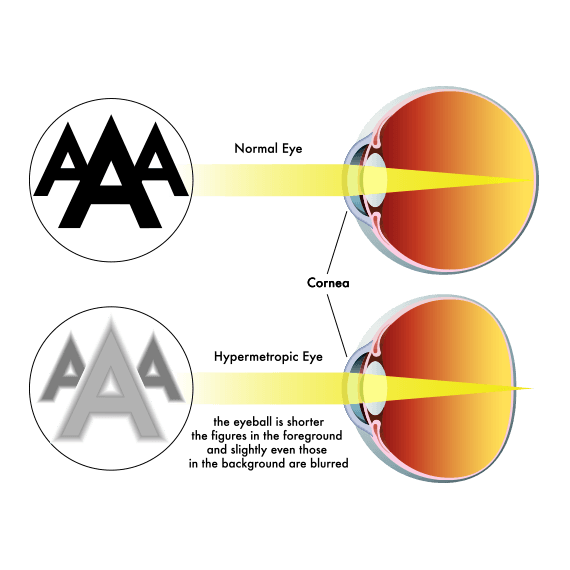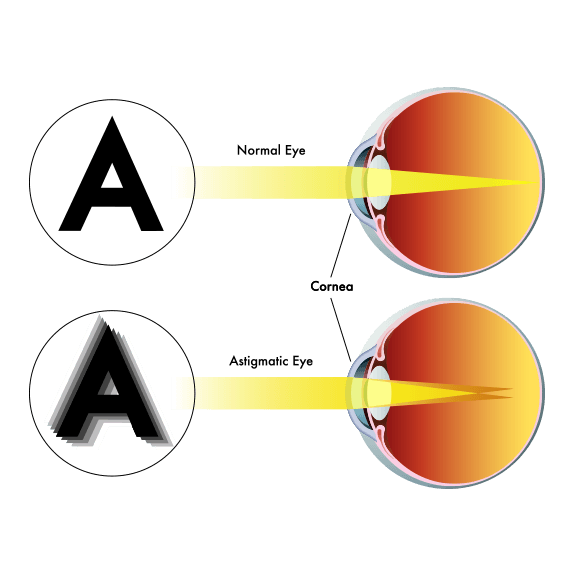


If the eye is too long or if the cornea is too curved, the light rays converge in front of the retina. This results in blurred vision, especially at distance. If you are nearsighted and remove your glasses, your vision will be better up close and you will have difficulty distinguishing distant objects.
To correct myopia, the laser must flatten the curvature of the cornea by vaporizing layers of cells mainly in the center of the cornea. The size of the area to be treated is chosen in advance by the ophthalmologist. Ideally, this area should correspond to the size of the pupil under dark lighting conditions.
The number of layers vaporized on the top of the cornea is directly proportional to the degree of myopia to be corrected and to the size of the area to be treated. If you have high myopia and large diameter pupils, your cornea may not be thick enough to be corrected safely and effectively. Laser surgery should be considered with caution for myopia exceeding -10.00 diopters. 
If the eye is too short or the cornea is not curved enough, the light rays converge behind the retina. The lens of the eye then exerts constant effort to adjust the focus of the image on the retina. This explains why some people with hyperopia have good distance vision for many years.
However, the eye’s effort to accommodate results in visual fatigue, mainly at close range. With age and the loss of elasticity of the lens, latent hyperopia gradually manifests itself as blurred vision in intermediate and distance vision.
To correct farsightedness, the laser creates a groove around the pupil, at the edge of the cornea, so as to make it more arched in the center. In general, laser treatment of farsightedness will be limited to degrees of +4.00 diopters.


Astigmatism is frequently caused by a “football-shaped” cornea, which is more curved at one axis and flatter at the opposite axis. This results in two different focal points in the eye, either in front of or behind the retina (myopic or hyperopic astigmatism).
This type of visual defect may cause uneven blurring around an object or the impression of a split image.
In general, astigmatism can be corrected by refractive surgery. The laser will perform a deeper or shallower ablation, depending on the axis being treated. 
Throughout life, the lens of the eye progressively loses its natural elasticity which allows it to switch between distance vision and near vision. This function is called accommodation.
Loss of accommodation (presbyopia) is physiological and affects everyone after age 40. It then continues until the fifties, when nearly all flexibility of the lens disappears.
When you wear your distance glasses, there are certain signs that can help you recognize the onset of presbyopia:
Laser corneal refractive surgery does not eliminate presbyopia. It is a compromise that aims to provide good distance vision, while maintaining functionality in intermediate and near vision. Following the correction of presbyopia by laser, it is necessary to adapt to the difference in vision between both of your eyes. You may need to wear auxiliary glasses to perform certain tasks.


Certain eye diseases (hereditary or acquired with age) may be considered to be untreatable by laser surgery for different reasons:
During the preoperative evaluation, if a contraindication to laser surgery is noted, other solutions to correct your vision will be proposed:
The ophthalmologist will recommend the best solution for your needs and lifestyle.



EXCELLENT





Basé sur un audit interne
de 350 patients
In order to ensure your safety, our centers have obtained a quality certification for the structure and patient care pathway.
The quality control procedures cover the entire patient journey: patient selection, preoperative examinations, the quality of the operating room, lasers, the maintenance log of the technical platform, and the use of informed consent.